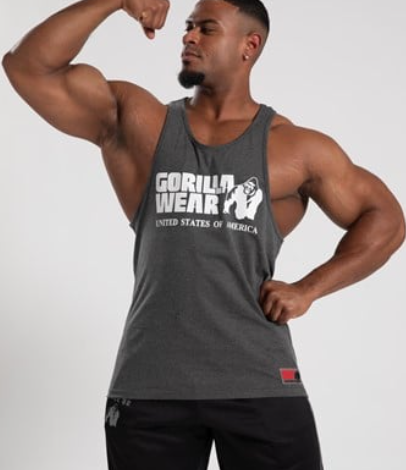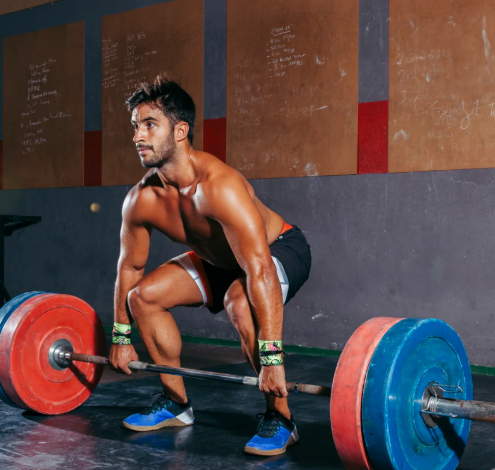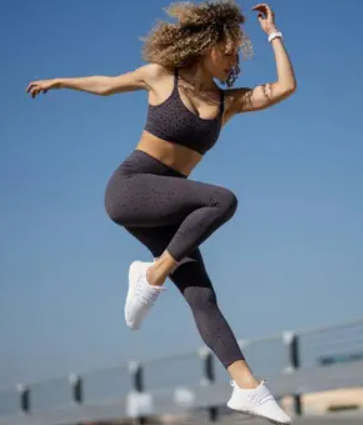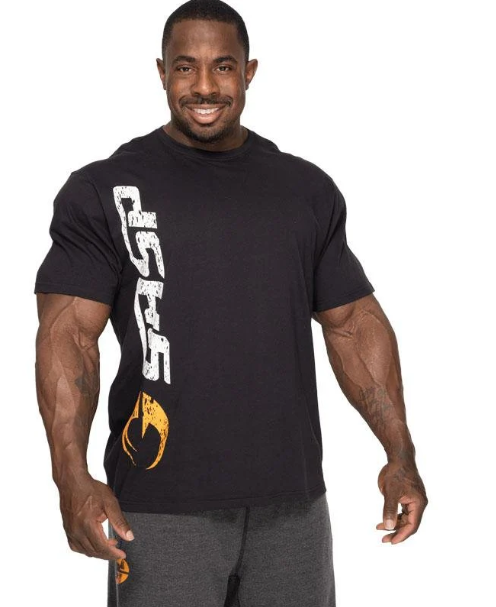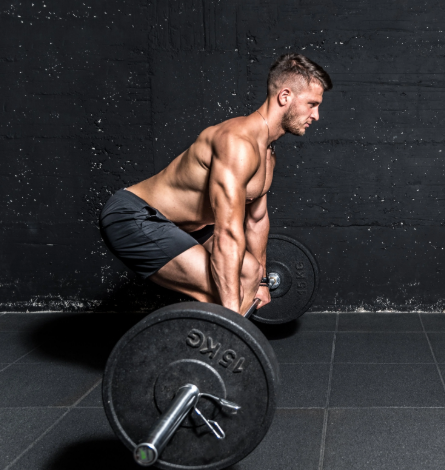
Romanian Deadlift: A Key Move for Building Strong Legs and Back
If you’re looking to build strength in your legs and back, the Romanian deadlift should be a staple in your workout routine. This exercise is incredibly effective at targeting the posterior chain—the muscle group in your back responsible for maintaining posture and supporting movement. By performing Romanian deadlifts, you’ll not only strengthen your back but also improve your grip, which is a key indicator of overall physical health.
Though similar to the conventional deadlift, the Romanian version emphasizes the hamstrings and glutes a bit more, making it an excellent choice for improving strength in those areas.
How to Perform the Romanian Deadlift
When you perform the Romanian deadlift, the most important thing to remember is that it requires a stiff-legged motion, without the deep squat motion typical of other deadlifts. While your legs should remain slightly bent, they should not be locked straight.
Here’s a step-by-step guide to performing the Romanian deadlift:
- Start Position: Stand tall with a barbell or dumbbells held in front of your thighs.
- Hinge at the Hips: Bend at the hips (not the knees) and push your hips back as you lower the weight.
- Maintain Good Posture: As you lower, keep your chest wide and draw your shoulder blades back and together.
- Lower the Weight: Keep lowering until the bar or dumbbells are just below your knees, but avoid letting the weight get too close to the ground.
- Return to Starting Position: Push your hips forward to return to the starting position.
Tips for Maintaining Proper Form
To maximize the benefits of the Romanian deadlift, proper form is critical. Here are some tips to help you maintain the correct posture:
- Don’t Lower Too Far: Stop the weight around the middle of your shin. Lowering too far could cause your back to round, and you’ll end up recruiting muscles you don’t want to target.
- Neutral Spine: Your spine should remain neutral, meaning it will naturally have a slight curve. Avoid a completely straight back or over-arching.
- Engage Your Upper Back: Your shoulder blades should stay retracted. Allowing them to round is a common mistake that can lead to improper form and unnecessary strain.
- Hip Hinge Movement: Keep your hips as the primary hinge during the movement. Your spine should remain aligned as you push your hips back.
- Barbell Close to Body: The barbell should stay close to your legs throughout the entire movement to maintain balance and control.
- Tight Core: Keep your core engaged to ensure stability and protect your lower back during the exercise.
Why Romanian Deadlifts Are Beneficial
Romanian deadlifts are beneficial for more than just building strength; they have applications in various sports and performance goals.
Muscle Growth
Romanian deadlifts promote hypertrophy in the hamstrings, glutes, and lower back. This muscle growth is crucial for increasing overall strength and power in your lower body while reducing the risk of injury.
Olympic Weightlifting
This exercise is particularly useful for improving the power and strength needed for Olympic lifts like the clean and jerk, snatch, and clean pulls.
Improving Deadlift Performance
In addition to strengthening muscles important for conventional deadlifts, Romanian deadlifts also help enhance overall performance by building endurance and power in the hamstrings and glutes. This support helps you maintain good form for longer periods and lift heavier weights.
Strengthening Lower Back and Posterior Chain
The posterior chain, which includes the hamstrings, glutes, and lower back, is essential for many athletic movements, such as sprinting, running, and jumping. Romanian deadlifts target these muscles, helping to build strength while also protecting against injuries.
Injury Prevention
The Romanian deadlift helps correct poor hip hinging patterns, promoting better posture and strength for other movements, such as cleans and front-loaded lifts. By reinforcing the need for a rigid spine, this exercise helps you maintain proper technique in a variety of workouts.
Using a Training Belt for Romanian Deadlifts
One accessory that can be particularly helpful during Romanian deadlifts is a training belt. This belt provides support to your core, which can be particularly beneficial when maintaining the correct spine posture while lowering the weight.
Here’s why using a training belt might be a good idea during Romanian deadlifts:
- Spine Protection: A belt can help protect your spine by providing extra support during the movement.
- Increased Lifting Capacity: With added core stability, you may be able to lift heavier weights with better control.
- Bracing Effect: The belt helps create a bracing effect, providing mental and physical support to overcome lifting barriers.
- Improved Biomechanics: With better posture and support, your biomechanics improve, making the lift more efficient.
- Stress Relief: The belt reduces stress on your spine and core muscles, which can help prevent injury over time.
One of the best options for a training belt is the GASP Training Belt. Made of high-quality leather, it offers durability, comfort, and strength. The 4-inch width provides support for your lower back, helping you maintain the proper posture throughout the movement. Available in various sizes, this belt is a great addition to your gym gear collection.

